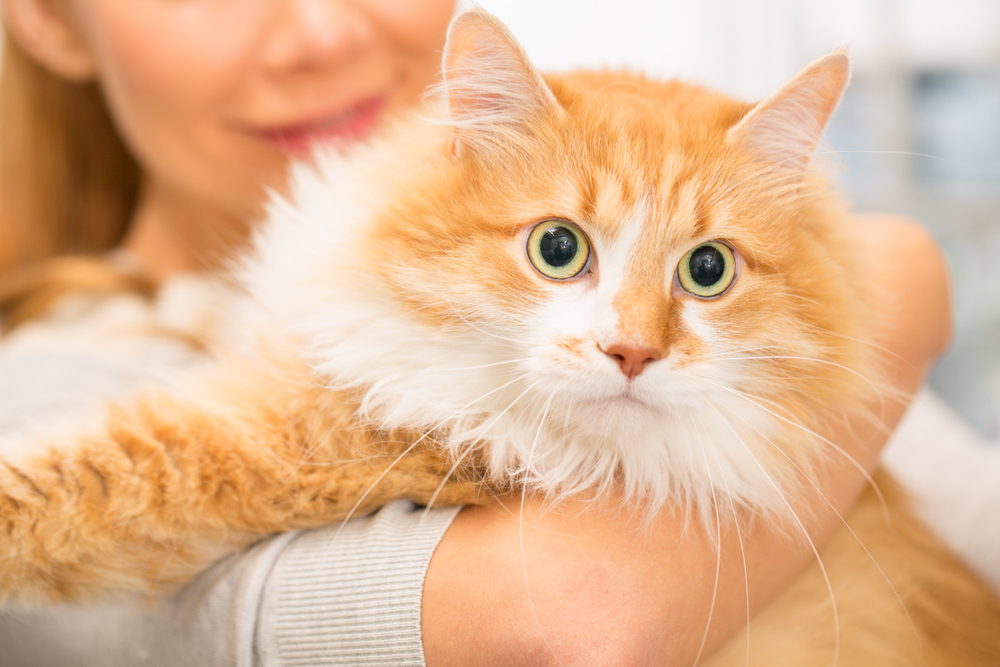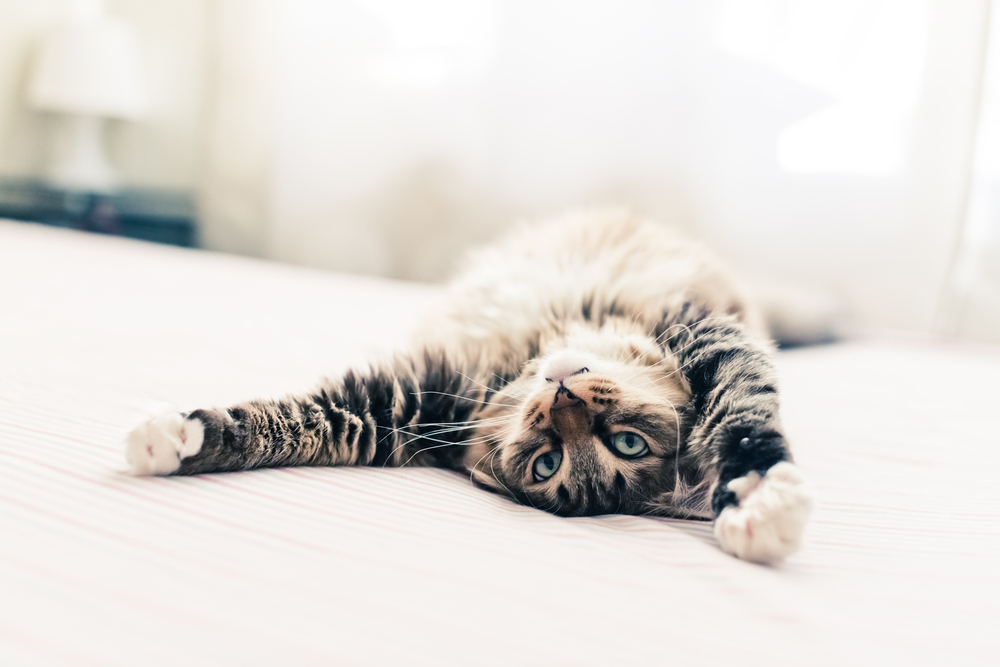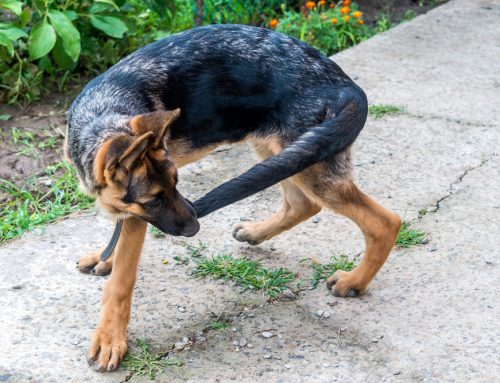Cats are synonymous with mystery and the unknown. As much as we think we understand our feline friends, their antics can leave the most devoted cat lovers scratching their heads.
Fortunately, feline behavior experts have unraveled the enigma of many confusing cat activities—giving observers like us fresh insights into what is behind that penetrating stare, twitching tail, and Jekyll and Hyde-style social interactions.
Have you ever wondered, “Why does my cat do that?” Then you are in luck. The Fremont Animal Hospital team has compiled explanations for the most confounding cat behaviors.
Why does my cat point their hind end at my face?
Cats aren’t exactly subtle about soliciting attention, and have no regard for personal space or decorum. If you’re frequently eye-to-tail with your cat’s caboose, don’t be offended—your cat is simply saying hello!
Cats greet each other by rubbing their bodies alongside one another, moving from head to tail, so both cats end up oriented toward the other’s derriere. This is advantageous, because such a greeting allows not only for easy sniffing, but also rapid and concentrated information-gathering. The cat’s hind end—including the anus and urogenital region—contain odiferous glands that they use to mark territory and convey key vitals, such as health, mood, and mating status.
The next time your cat purposely positions their posterior in close proximity, pat them or scratch them above the tail—an area that triggers happiness and contentment—and wish them well.
Why is my cat hyper at night?
If your cat’s energy level goes up when the sun goes down, they aren’t trying to disturb the peace—they’re simply exhibiting natural cat behavior. Cats are crepuscular, meaning they are most active in the late evening and early morning, which may not align with the typical human sleep-wake cycle, but gives cats a predatory hunting advantage, since most small mammals are active around dusk and dawn.
If your cat’s nighttime shenanigans are keeping you awake, try providing extra exercise and mental stimulation throughout the day. This can be accomplished by playing with laser pointers, motion-activated toys, or interactive puzzles. Also, because eating can satiate cats and encourage slumber, try feeding your cat their evening meal an hour before you go to bed.
Why does my cat flop over when they approach?
Your cat’s floppiness isn’t laziness, but communicates friendliness, appreciation, or peace.
Cats abruptly lie down or flop in greeting (i.e., a social roll) or to convey trust and comfort in the person or fellow pet. Kittens may make this gesture to invite play or attention, or cats’ exposed bellies may be telling another animal or human that they mean no harm. Finally, your cat may flop if they want something, such as access to a closed room or a tasty treat.
You may be tempted to rub your cat’s belly, but the social roll is not an invitation for abdominal massage, which may earn you a hearty swat. Instead, respond according to your cat’s purr-sonality (e.g., verbal praise, head scratch, a favorite toy).
Why does my cat head-butt me?
If your cat presses their head against yours, they’re not necessarily trying to mind-meld with you—but they may be claiming you as their own. Cats head-butt (i.e., press the top or side of their head against your face, chest, or legs) to express affection, seek attention, and deposit territory marking pheromones. Pheromones are chemical messages odorless to humans that convey the cat’s olfactory signature, rich with vital information about their mood, health, and mating status, to other felines.
Head-butting can be endearing, but also disruptive. If your cat repeatedly or aggressively head-butts you at inopportune times, try introducing new bonding activities, such as toy play, puzzle games, and trick training. Non-physical enrichment methods will provide a more suitable outlet for your cat’s energy and affection.
Why is my cat scared of something I can’t see?

Sometimes cat behavior can be unnerving, especially when they are frightened by a seemingly invisible threat. But, while you may be unable to determine the cause of your feline’s fears, know that cats can perceive subtle changes beyond our sensory abilities.
Your cat’s extra-sensitive perception includes:
- Sight — Cats enjoy a broader visual field (i.e., 200 degrees) and a finer ability to see in low light. Cats are also better at detecting motion, a critical attribute for hunting small, fast-moving prey.
- Smell — The feline olfactory system is 14 times stronger than ours, with 200 million scent receptors compared with our paltry 5 million.
- Hearing — The cat’s ear can swivel 180 degrees, and allows them to literally and figuratively perceive a much larger sound range. Felines can also hear high frequency sounds up to 60,000 hertz and up to a half-mile away, far beyond our auditory limits.
- Sensation — Cats can detect ground vibrations through their paw pads, and temperature, wind direction and speed, barometric pressure, and spatial distance with their finely tuned whiskers.
The next time you try to reassure your frightened cat or dismiss their behavior with “There’s nothing there,” remember that only they can perceive the wider world inaccessible to us.
Cat behavior is a complex and nuanced area of study that we may never fully understand. But, these few insights are enough to unlock a deeper appreciation and understanding for our feline friends.
If your cat’s behavior is perplexing, or downright problematic, our expert veterinary team at Fremont Animal Hospital can help determine if a health problem is to blame. Contact us to schedule an exam or request an appointment online.






















Leave A Comment